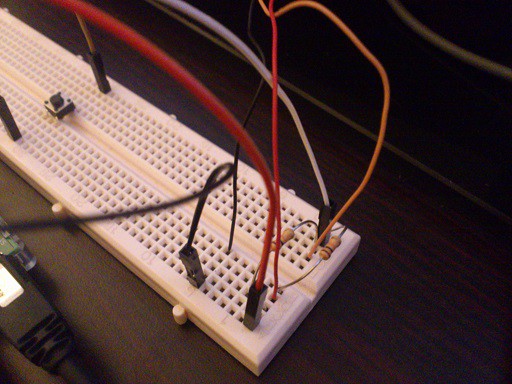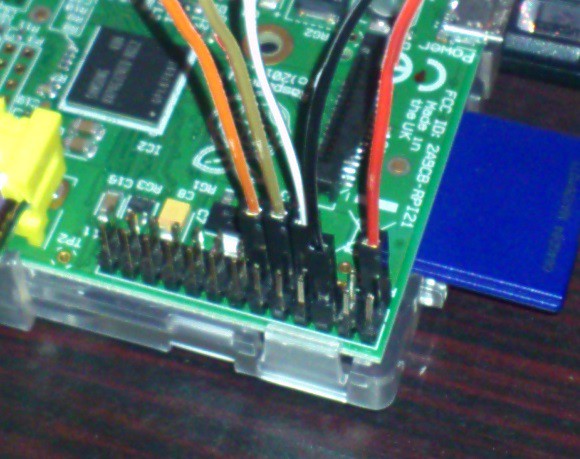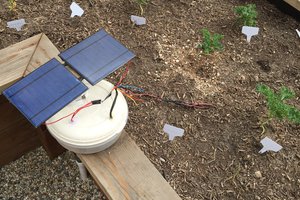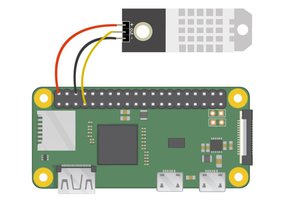The Raspberry Pi (model B shown in this project) runs the default "Raspbian" OS, and the "lighttpd" lightweight web server.
The DS18B20 temperature sensors are all connected to the same 3 pins on the RPi via a custom patch panel made from terminal blocks. There is a 5K ("pullup"?) resistor between the +5V and data pin:

(Note: picture above shows breadboard connection, orange wire is DS18B20 data wire, which is connected to white lead running to the RPi).
Temp sensor VCC (5V), GND and DATA wires are connected to Raspberry Pi 5V, GND and GPIO pin 7 (the red, black and white wires below):

Note that the DS18B20 temperature sensors all share the same "bus" here, but each sensor has a unique ID.
The flow sensors are connected to GPIO inputs, which are configued to detect and count pulses from the flow sensors (more... TODO)
A web page is created in the web server's public folder (var/www/). When this web page is is requested by a remote computer, a python script is run to collect the temperature and flow rate data, and return it formatted as the HTML output.
 James
James
 Katarina Zvarova
Katarina Zvarova
 Rohma Khalid
Rohma Khalid
 barbercayman
barbercayman
 Initial State
Initial State